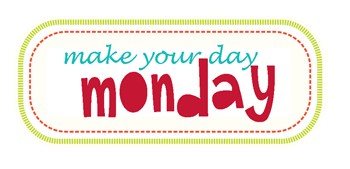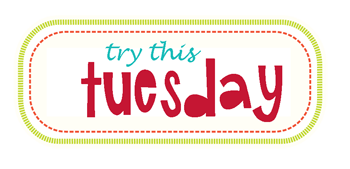
Showing posts with label Speech. Show all posts
Showing posts with label Speech. Show all posts
Jan 23, 2012
The Most Beautiful Things
I was so grateful Jocalyn shared this trailer and film on her blog. It truly inspired me for many reasons, so I thought I'd share it! Here is the trailer and the actual, full film. Truly amazing.


Oct 25, 2011
Low Tech Yes and No Response
We were looking for a good way to for my non-verbal daughter to communicate so we started with a Yes and No response. After several techniques failed it seemed she had the most consistent response with the Yes No Answers app on the iPad. However, the iPad just isn't always available and we have lots of kids in the neighborhood that include Emma and they ask her questions and it's awkward for her to have me get in the way with an iPad for her to respond. It totally ruins the moment and then Emma ignores the iPad and me because there are kids around. So I decided to try a method that works well for another family that I know. It's low tech, super easy, and everyone including the kids can use it without any help. Let me tell you what we are doing. Basically, whoever wants to talk to Emma can ask her a question and then you hold out your right hand with your palm open facing her and your left hand fisted facing her and ask her yes (shaking right hand) or no (shaking left hand). Emma thinks about her response and then reaches out for the appropriate hand. It didn't take much time to get her to be very accurate with this method. And since we've been using this a few weeks now she knows which is Yes and No so we don't have to shake it anymore. I'm hoping that eventually we won't even have to say Yes and No when giving her the hand signal but that could come in time. For now I'm super excited that we have a method that Emma and that anyone can use with Emma. I created a card to laminate and attach to her wheelchair as an easy way to remind (or introduce if it's a new person) people about how Emma answer's questions.

Apr 26, 2011
Rory Story Cubes
Most 7q11.23 Duplication children find expressive speech difficult. They often times know what they want to say, but have difficulty articulating their thoughts. As more language ability is acquired, therapy continues to be essential. Therapy may shift from an articulation based therapy to sessions focusing more on expressing complex thoughts, feelings, social stories, and expressive writing.
One tool that has proven to be beneficial for our son in clinical and home therapy is a simple game of Rory's Story Cubes. http://www.storycubes.com/. At the time of this post, there are two sets of die available. One has iconic images and the other contains actions.
When I read about this game for typical children in the newspaper, I immediately knew it would make a great therapy game. The sets are inexpensive and great for therapy groups or families. The family / kids shake the die and then tell a story based upon the pictures on the dice. One person may play, or participants may take turns telling portions of the story. My son enjoys making the stories silly. By the time we are done, everyone is laughing.
In the past, my son would become very frustrated with how difficult it was to come up with writing topics for homework, social stories, etc. With the dice game, the pictures are cues and help him fill in the blanks. They also can be used to help him identify the parts of a story, characters, plot, etc. Again, a great therapy tool for speech, social skills, and writing, and so much more.
We have shown this game to all of our therapists, and they have all purchased the game to use in their practices. It is that great. The best part is that the game only costs a few dollars and can be ordered
online. I believe they also have an iPhone app.

Nov 2, 2010
Giving Our Kids A Voice

Having a child who "looks" pretty typical and yet isn't able to communicate or interact in a "typical" way is often challenging and frustrating to the parent and the child. Speech delay, apraxia, social and emotional delay and a communication disorder are all part of our life.
Although, our world does allow for little snippets of celebration. Such was the case a few years ago when Jackson participated in his Kindergarten graduation program. First hallelujah - he braved the stage and sitting with the other children. Second hallelujah - he didn't cover his eyes or try to hide his face. And third - he got up to the mic and gave his part. Sure it was only a few words of his assigned sentence, in a broken, staccato, high pitched, Jacks voice. But, he did it. He had a voice.
Getting to this point in our lives took some effort. Well, actually it took a lot of effort and A LOT of therapy. Early Intervention and private therapy were key. Over the last ten years, Jackson has made great strides in his ability to communicate and interact. Are things perfect? No, we still have a long way to go.
However, if I could share some of our experience with another parent who has a child who struggles with communication disorders, I would want them to know about these tools. Speech therapists use them, and they may not be a crazy new thing to most of us out there, but.... just in case; ....just in case there is someone out there who may be looking for good tools, then this post is worth it.
1. Jackson was almost 4ish before we really heard any good verbalization. One thing that truly jump started his talking was PECS (picture exchange communication system).
You can google away to find out the nitty gritty info about PECS. Or, ask your therapist about PECS if they haven't already brought it up to you. There are also specific protocols to use in order to train your child to use these cards. However, while we used the protocols at first, we found Jackson caught on to the pictures fairly quickly. Before we knew it, we were phasing out the cards and moving on to actual verbal words.
PECS taught Jackson he could use a card to communicate his needs. He could also group the cards to form sentences and more complete thoughts. The format also helped his behavior. He learned he needed to "talk" in order to have his needs met. This was not an instant thing. It did take time and patience, but the result was worth it.
2. I think one of the reasons why PECS was so successful for us was because of Jackson's knowledge of sign language. These are really popular now, however the Signing Times videos helped our whole family get on board and actually learn and implement the signs.
One quick example: The setting: Family pictures with the WHOLE extended family. The issue: A REALLY fussy, three year old, Jackson. Problem identified: Jackson signed the sign for CAT. He saw a cat in the bushes. The cat was the reason for the major melt down. If he didn't have sign, we never would have known or been able to fix the issue.
There are also videos available for autism, and various syndromes. If you've looked at these before, it may be worth a second glance to see what's new.
3. Speech generating devices. A friend of ours, who also has Jackson's syndrome, 7q11.23 Duplication, has a bigger portion of the duplication. She has been non-verbal for most of her life. In addition to sign, she uses a communication device, such as a Dynavox. It is a pricey piece of equipment. However, now with the use of touch phones, many applications are available that mimic the devices' capabilities. Proloquo2Go is only one example.
4. In addition to actual speech therapy, there are several tools that are helpful outside of a therapeutic setting.
Builds core cognitive thinking skills while letting children have fun at the same time. It assists with auditory processing, learning to follow directions, memory, and provides thought provoking activities.
Jackson wants to make friends, but often times, the anxiety surrounding social situations is so overwhelming it is nearly impossible to socially interact. These programs provide children with training and tools necessary to navigate social settings. While Jackson still struggles in this area, knowing the "rules" of social situations gives him some place to start.
Once Jackson learned to talk, the struggle of communicating didn't end. Communication disorders often transfer over to academic areas, such as writing. These products help children learn how to develop narrative thinking skills that can be used in not only verbal situations but also in narrative writing. Yes, eventually we have been able to hear more than "Good" when we ask about his day at school. Answering a simple question may be easy for us, but it is completely overwhelming when apraxia and communication disorders are in play.
Not only helps children with reading, but assists with auditory processing, sound rhymes, sound blends, and articulation. Reading is the gateway to academic success. There are also articles indicating that reading fiction may help with building social skills. So many things are interrelated and have cross over benefits.
5. Review the IEP
By reviewing your child's IEP frequently, you will not only be more in tune with the goals your child is working on at school, but you'll have them in the back of your mind during daily interactions. Speech goals differ from other academic goals because you're able to "work on them" at all times of the day. Ex: "Jackson, throw away the dirty napkin. Throw... Th.... Th...." (making the "th" sound.) "Now it's your turn."
In addition to more home practice, being very familiar with all aspects of the IEP and its goals is a HUGE benefit to your child. What better way to be their advocate than to truly know their IEP and making sure what is outlined as a goal is really happening and being implemented.
There are so many tools. Not all of them cost money. With the exception of Thinkin Things and Earobics, almost any language program could be adapted with little or no cost. Google and the Web is full of ideas from moms and dads who know and understand our dilemmas.
Good luck, and I would love to hear any of your favorite speech tips and tricks. I'm sure there are many things you've been doing that we haven't yet tried.

Subscribe to:
Posts (Atom)







